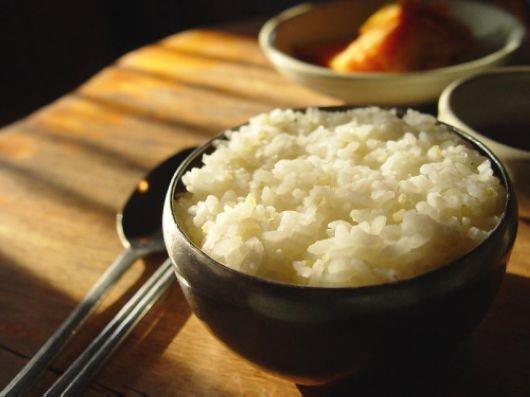
In Korean Cuisine, rice is a more important ingredient than any other Asian county. Even though the index of rice consumption has shown that we decrease to eat rice by replacing more flour-based foods.
Rice varies in color, shape, size and texture. Most of the time, we eat white rice. Depending on the preference of our family, we can add different styles of rice, or put extra crops into rice like corn, beans, peas, millet and sorghum.
Since the taste of rice is sweet if you chew it well, it can be a bit bland and unbalanced in nutrition when eaten à la carte. Traditionally we have always prepared some side dishes along with the staple. Basically, we set the table with Namul (나물): blanched and seasoned vegetables like aubergine, spinach, bean sprouts, bracken fern stems, mushrooms, and any seasonal plants which some old seniors forage from the wild mountains and fields in spring and fall.
Other side dishes along with Namul are some fish as grilled or steamed or cooked with soy or Gochujang sauce with some veggies. As a main menu of the meat, we will choose Bulgogi which can be cooked with two different sauces either soy sauce or gochujang one as usual. But we do not eat this recipe daily basis. Most of all, Soup is commonly loved to be accompanied with every meal in Korea. Dwenjang Jjigae (된장찌개) is mostly enjoyed as well as Kimchi jjigae.
In case of Kimchi, it is part of basic fermented side dishes for every meal in Korean life. Kimchi has also various genre locally and seasonally.
A bowl of rice cannot be replaced with other carbohydrate food like Ramen or noodles to be harmonized authentically with all the side dishes above. Rice has supported Korean as our cliché says “We work with the energy of rice. (밥심으로 일한다.)” Rice has been fundamental for Korean. So please understand if you encounter a Korean person asking if you had meal or not, that is just a caring greeting. ” Siksa Ha si yot seo yo? 식사하셨어요? : Have you eaten your meal?”